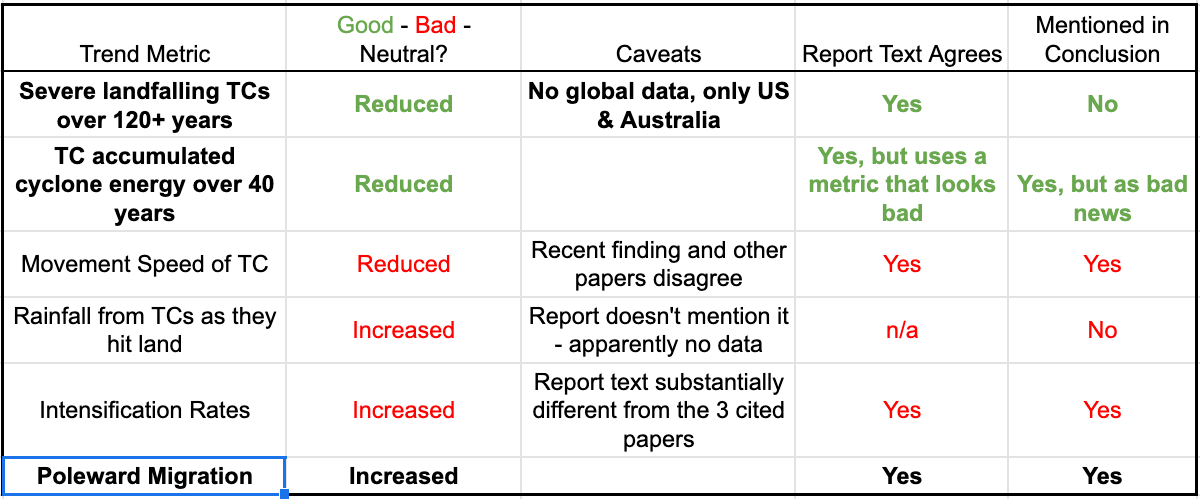In parts #1 through #6 of this series we’ve followed the six metrics on tropical cyclones (TCs) that are discussed in chapter 11 on Extreme Weather of the IPCC 6th Assessment Report.
The conclusion of this section of chapter 11 on TC trends says:
In summary, there is mounting evidence that a variety of TC characteristics have changed over various time periods.
It is likely that the global proportion of Category 3–5 tropical cyclone instances and the frequency of rapid intensification events have increased globally over the past 40 years. It is very likely that the average location where TCs reach their peak wind intensity has migrated poleward in the western North Pacific Ocean since the 1940s. It is likely that TC translation speed has slowed over the USA since 1900.
Here’s my summary. It’s a little different.
Green means “good news for the world”, red means “bad news for the world” and black is neutral. Bold text means the evidence is strong, with neutral text meaning the evidence is less clear:
We can see that the conclusion missed out the good news about long term trends, and follows the text of the report in categorizing 40-year declining accumulated cyclone energy (ACE) as bad news.
Overall, good news is missing from the conclusion, and bad news - even apparent bad news - is reported.
Perhaps this is an aberration?
So far we haven’t looked at any questions on Attribution (the causes of any of these trends) or any question about Predictions of the Future. We’ll get to these.
In the next article we’ll move onto trends in extreme rainfall and then onto floods.
References
Seneviratne et al, 2021: Weather and Climate Extreme Events in a Changing Climate. In Climate Change 2021: The Physical Science Basis. Contribution of Working Group I to the Sixth Assessment Report of the Intergovernmental Panel on Climate Change
Articles Referenced on Tropical Cyclones
#1 – Long term trends in Frequency and Intensity of Landfalling Tropical Cyclones
#2 – Trends in Frequency and Intensity of Tropical Cyclones out over the Ocean
#3 – Trends in Translation Speed of Tropical Cyclones
#4 – Trends in Rainfall in Tropical Cyclones





If there are disparities between the details and the conclusions and they are always in the direction of bad, there may be some "political" pressure on the scientists doing the studies.